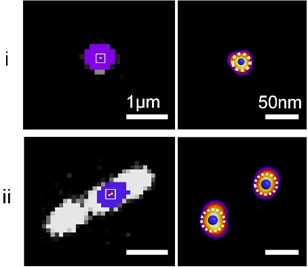Single-defect spectroscopy in the shortwave infrared

Nature Communication 2019, 10, 2672
Xiaojian Wu, Mijin Kim, Haoran Qu, and YuHuang Wang
The abstract reads as follows: Chemical defects that fluoresce in the shortwave infrared open exciting opportunities in deep-penetration bioimaging, chemically specific sensing, and quantum technologies. However, the atomic size of defects and the high noise of infrared detectors have posed significant challenges to the studies of these unique emitters. Here we demonstrate high throughput single-defect spectroscopy in the shortwave infrared capable of quantitatively and spectrally resolving chemical defects at the single defect level. By cooling an InGaAs detector array down to −190 °C and implementing a nondestructive readout scheme, we are able to capture low light fluorescent events in the shortwave infrared with a signal-to-noise ratio improved by more than three orders-of-magnitude. As a demonstration, we show it is possible to resolve individual chemical defects in carbon nanotube semiconductors, simultaneously collecting a full spectrum for each defect within the entire field of view at the single defect limit.
X.W. and H.Q. are partially supported by the Center for Enhanced Nanofluidic Transport (CENT), an Energy Frontier Research Center funded by the U.S. Department of Energy, Office of Science, Basic Energy Sciences under Award # DE-SC0019112 for studying the roles of defects in nanofluidic transport.
